In the world of interior design, Japandi stands out as a harmonious blend of the minimalist elegance of Japanese design and the cozy functionality of Scandinavian style. This fusion creates spaces that exude calm, balance, and understated beauty, appealing to both the seasoned decorator and those just embarking on their design journey. By embracing Japandi, you invite serenity into your home—a welcome respite from the hustle and bustle of everyday life.
For those new to interior design, Japandi offers a straightforward yet profound approach to transforming your living spaces. Its emphasis on natural materials, neutral palettes, and thoughtful simplicity can make any room feel like a sanctuary. Experienced home decorators will appreciate the depth and sophistication that Japandi brings, allowing them to experiment with textures and forms in a way that feels both fresh and timeless.
In this article, you’ll discover 14 elegant Japandi concepts that will inspire and guide you in infusing this style into your own home. From practical tips on selecting the right furniture to insights on balancing aesthetics with functionality, each concept is designed to be accessible and actionable. Whether you’re looking to revamp a single room or your entire living space, these ideas will equip you with the knowledge and confidence to create an environment that is as serene as it is stylish.
Embracing Minimalist Aesthetic
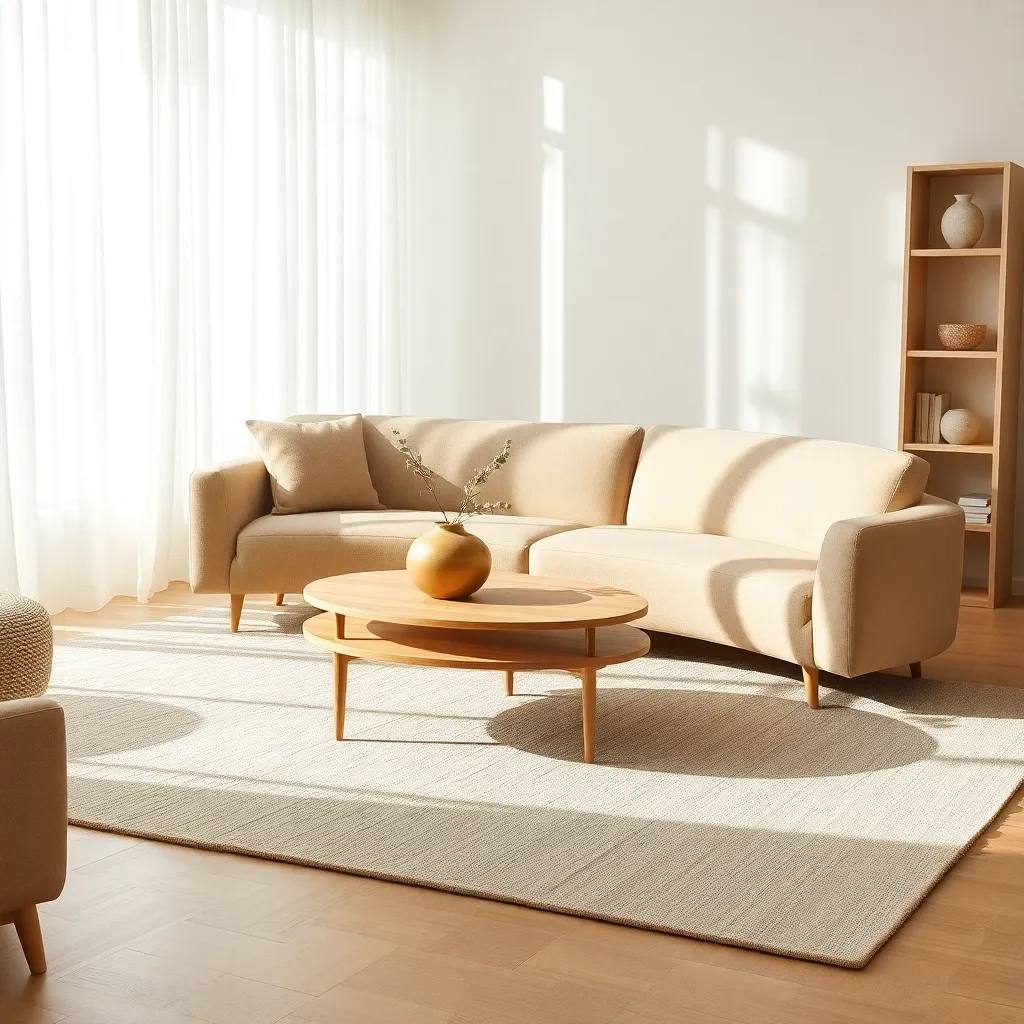
In a Japandi interior, embracing a minimalist aesthetic is key to achieving balance and harmony. Start by selecting furniture with streamlined silhouettes and minimal embellishments, focusing on pieces that serve dual purposes, such as a bench with hidden storage.
Choose a neutral color palette featuring shades like soft whites, muted grays, and earthy tones to create a calming backdrop. To add depth, incorporate natural materials such as wood, stone, or linen, which align with the Japandi emphasis on nature.
Consider the placement of each piece to ensure that the space remains uncluttered and functional. For instance, arrange furniture to allow for easy movement and ensure that every item has a purpose, reinforcing the minimalist ethos.
Advanced decorators might experiment with subtle contrasts by introducing textured textiles like a woven wool throw or a jute rug, adding interest without overwhelming the space. Additionally, integrating plants can soften the minimalist look while bringing a touch of nature inside, enhancing the tranquil Japandi ambiance.
Choosing Natural Materials Wisely
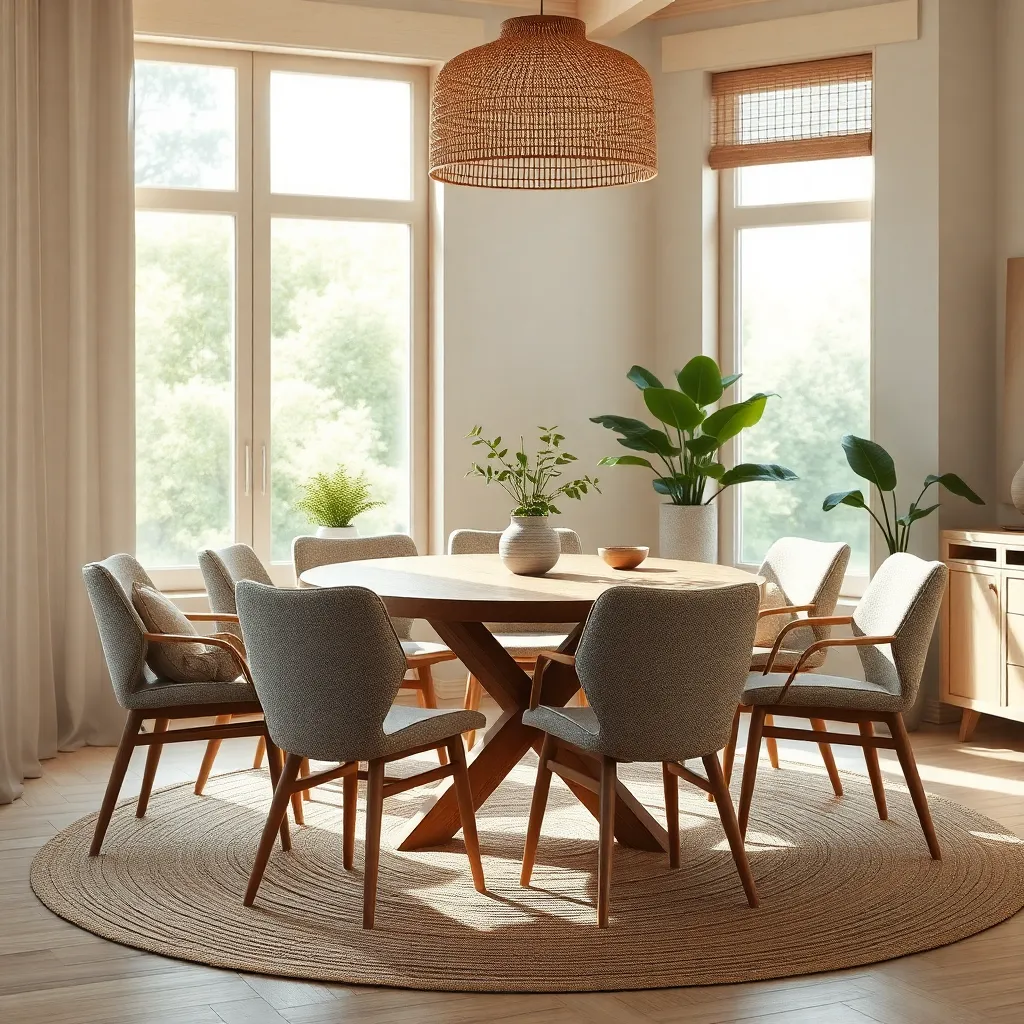
Integrating natural materials into a Japandi design involves a thoughtful balance of simplicity and elegance. For beginners, start by selecting materials like oak, bamboo, or rattan for furniture, which add warmth and texture without overpowering the minimalist aesthetic.
Consider incorporating stone elements, such as a sleek slate tabletop or a granite countertop, to introduce an earthy contrast to wooden features. These materials not only enhance the visual appeal but also provide a durable surface ideal for active spaces like kitchens and dining areas.
For a cohesive look, choose textiles such as linen or cotton in neutral tones like beige, taupe, or soft gray. These fabrics can be used for curtains, cushions, or throws, adding layers of comfort and softness while maintaining a serene environment.
Advanced decorators might explore the use of reclaimed wood or ethically sourced materials to align with sustainable practices, a core value in Japandi philosophy. Repurposed elements not only bring unique character to your home but also underscore a commitment to environmental responsibility.
Incorporating Warm Neutral Tones
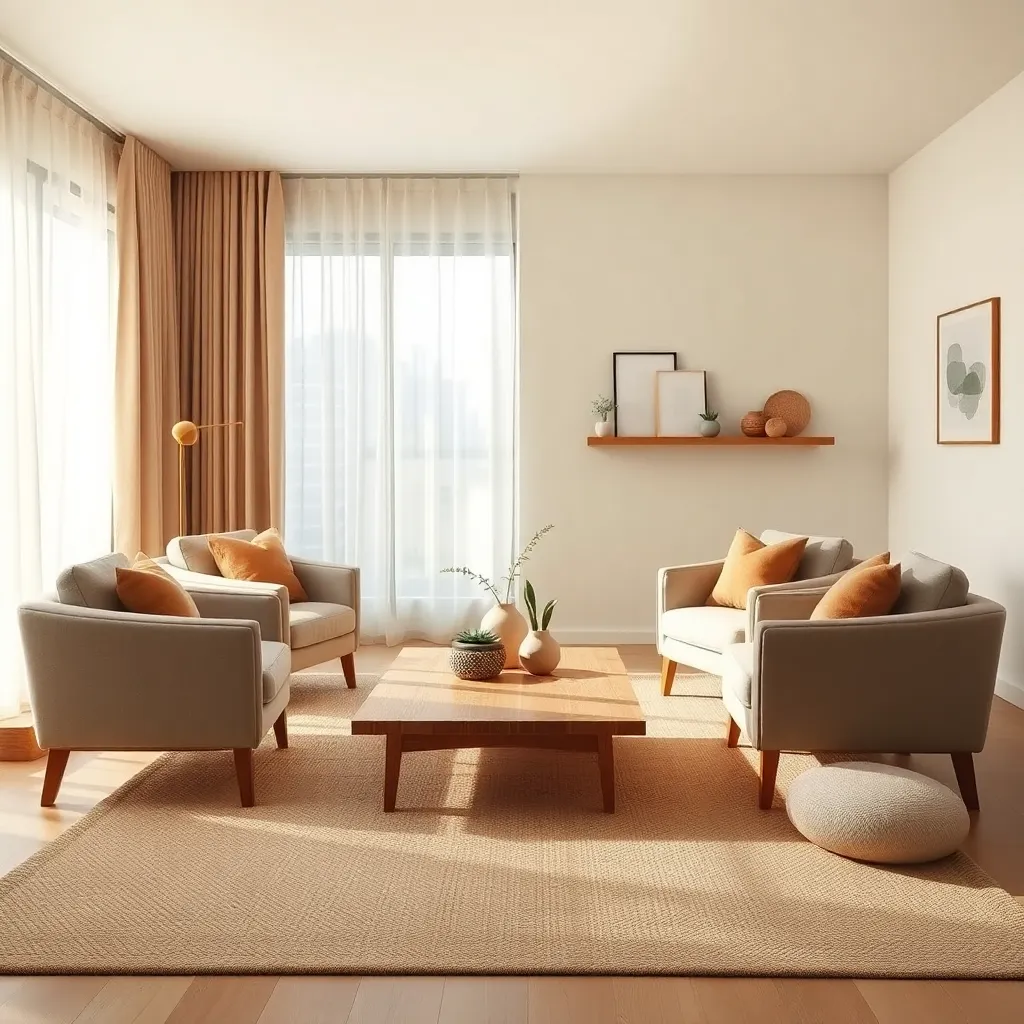
Incorporating warm neutral tones into your Japandi decor can create a serene and welcoming atmosphere. Start by selecting a color palette that includes shades like soft beige, warm taupe, and muted terracotta, which can serve as a calming backdrop for your space.
Warm neutrals work beautifully when layered with different textures to add depth and interest. Consider using materials like linen, wool, and natural wood, which not only complement these tones but also enhance the tactile experience in the room.
When choosing furniture, opt for pieces with clean lines and minimal embellishments to align with the Japandi aesthetic. A plush, taupe sofa paired with a simple wooden coffee table can anchor the room, offering both comfort and style.
For a more advanced touch, blend these neutrals with subtle pops of color through accessories. You might incorporate earthy greens or soft blues with items like ceramic vases or cushion covers to maintain harmony without disrupting the overall calmness of the scheme.
Integrating Indoor Greenery
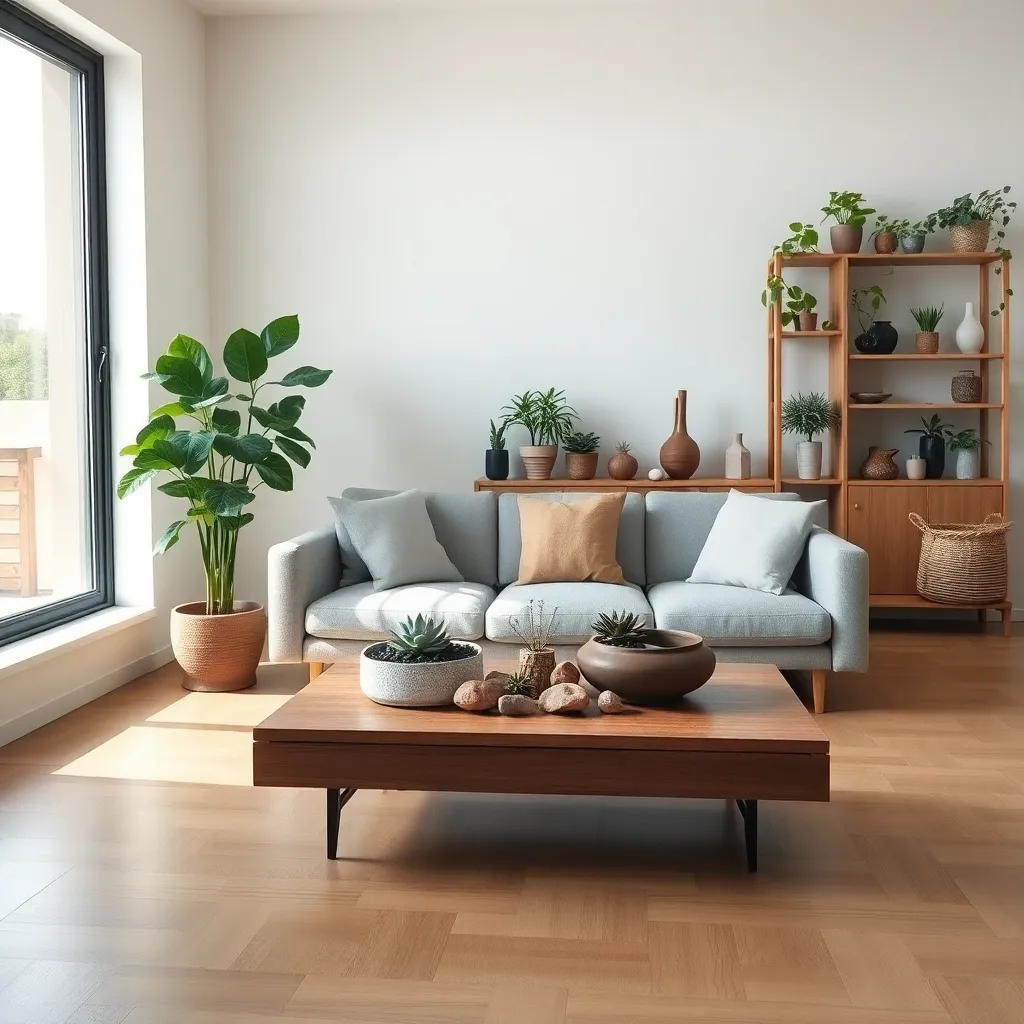
When integrating indoor greenery into a Japandi interior, consider using plants that complement the serene and minimal aesthetic. Opt for foliage like fiddle leaf figs and snake plants, which offer elegant shapes without overwhelming the space.
Place your plants strategically to create a sense of balance and harmony within the room. Avoid clutter by using minimalist plant stands or hanging planters that keep the floor space clear and enhance vertical interest.
Incorporating natural materials for your planters can further enhance the Japandi vibe. Choose ceramic, terracotta, or wood planters in neutral tones to seamlessly blend with your existing decor, adding a touch of organic warmth.
For advanced decorators, consider incorporating a statement piece like a bonsai tree to draw the eye and add a sculptural element. This can serve as a focal point in a room, ideally placed on a low, sleek table where it commands attention yet remains understated.
Blending Functional and Stylish Decor
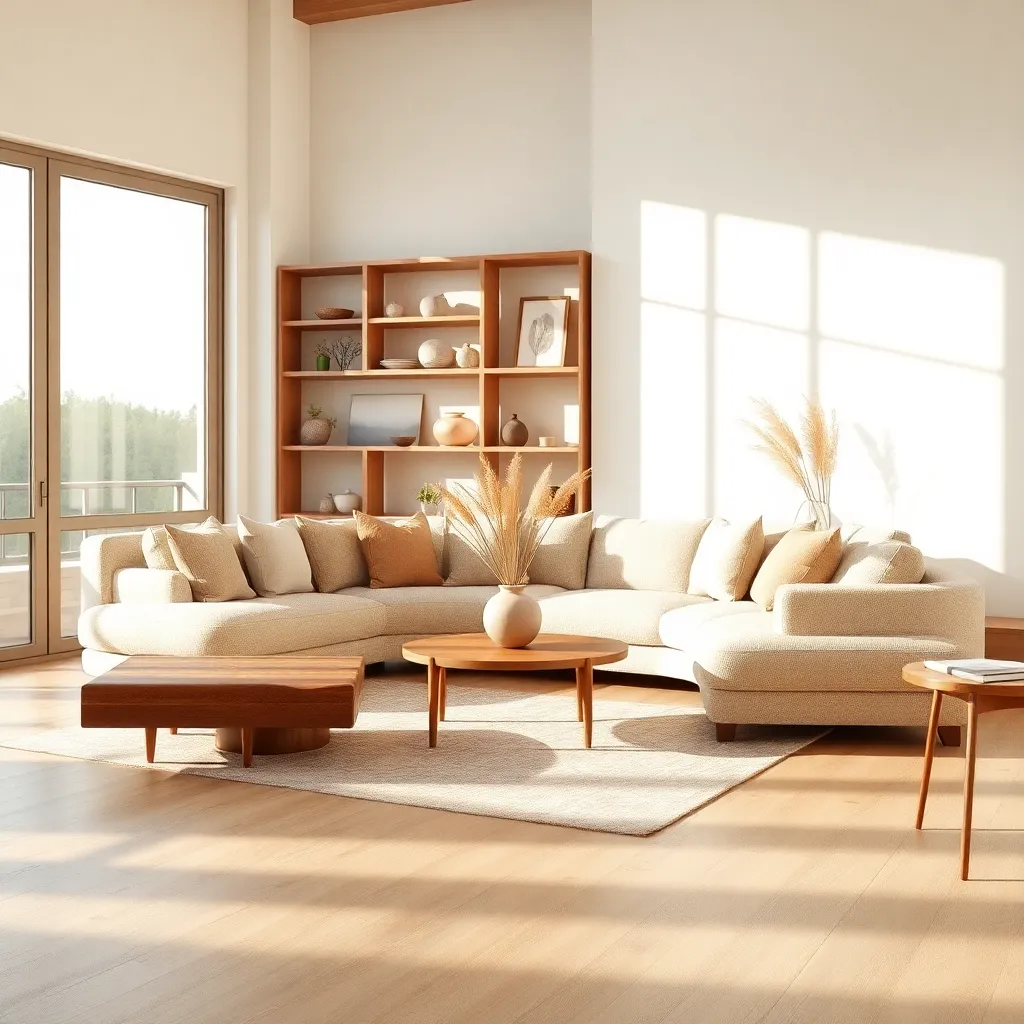
To seamlessly blend functional and stylish decor in a Japandi interior, focus on choosing furniture that serves multiple purposes. Opt for pieces like a sleek sofa with hidden storage or a minimalist dining table that extends, ensuring every item in your space maximizes utility and elegance.
Strategically place these multifunctional pieces to maintain an open and airy feel, characteristic of Japandi design. Position a low-profile bookshelf against the wall near your seating area to provide both storage and a display for curated decor items, maintaining a balance between functionality and aesthetic appeal.
Consider incorporating a neutral color palette with soft, muted tones to enhance the serene atmosphere of your Japandi space. Pair natural materials such as light wood and linen with subtle pops of color through accessories like cushions or throws to add warmth without overwhelming the simplicity.
Advanced decorators can experiment with layering textures to add depth while maintaining a clean look. Combine a plush wool rug with a smooth leather chair, ensuring each element adheres to the core principles of simplicity and minimalism that are central to Japandi style.
Maximizing Natural Light Sources
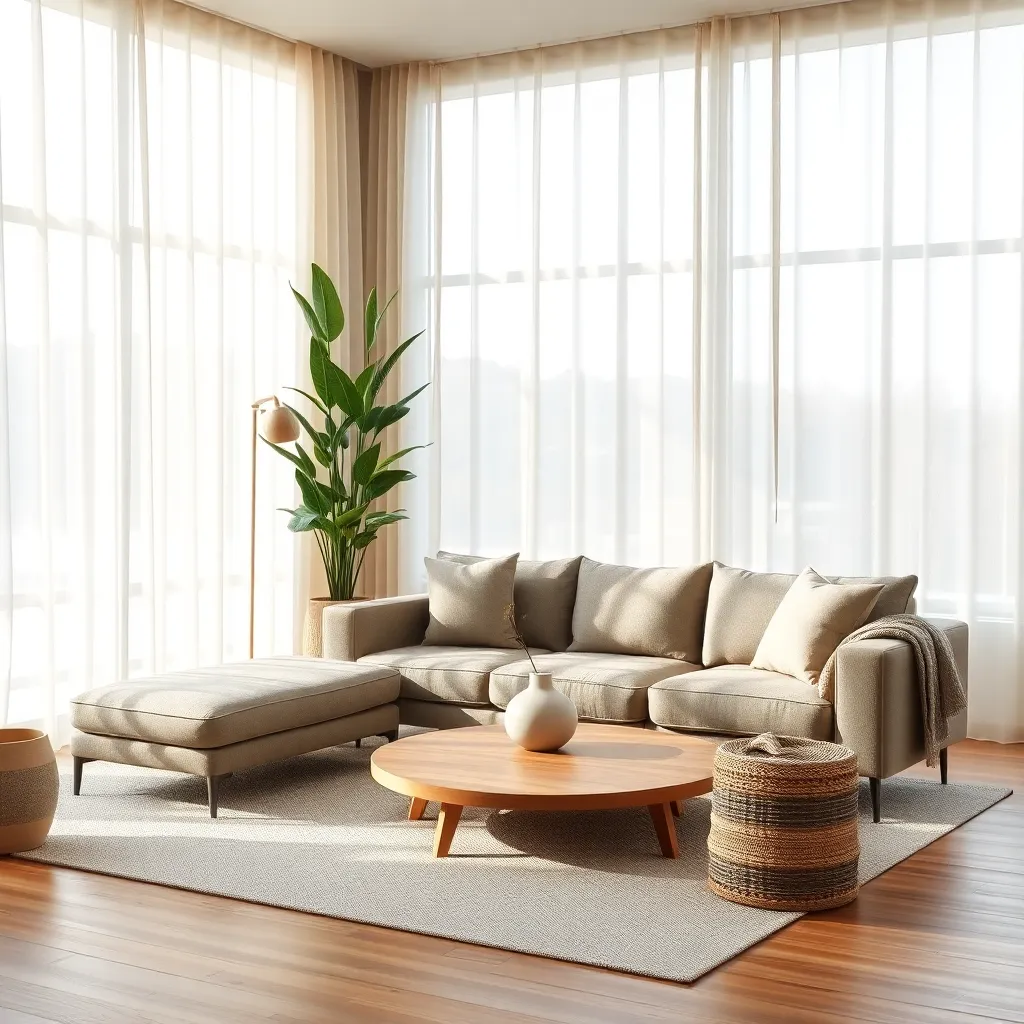
Maximizing natural light sources in a Japandi interior starts with the strategic placement of mirrors. Position mirrors opposite windows to reflect and amplify the sunlight, creating a brighter and more open atmosphere.
Consider using sheer or light-filtering curtains to allow sunlight to gently diffuse into your space. Opt for natural fabrics like linen or cotton in neutral hues to complement the Japandi aesthetic while enhancing light flow.
To further capitalize on natural light, choose furniture pieces with low profiles that don’t obstruct windows. Select tables and chairs in lighter woods such as ash or beech, ensuring they blend seamlessly with the serene Japandi palette.
Advanced decorators can incorporate translucent room dividers or glass partitions to maintain an open feel without sacrificing privacy. This technique not only maximizes light but also adds a modern edge to the minimalist Japandi style.
Curating a Serene Ambience
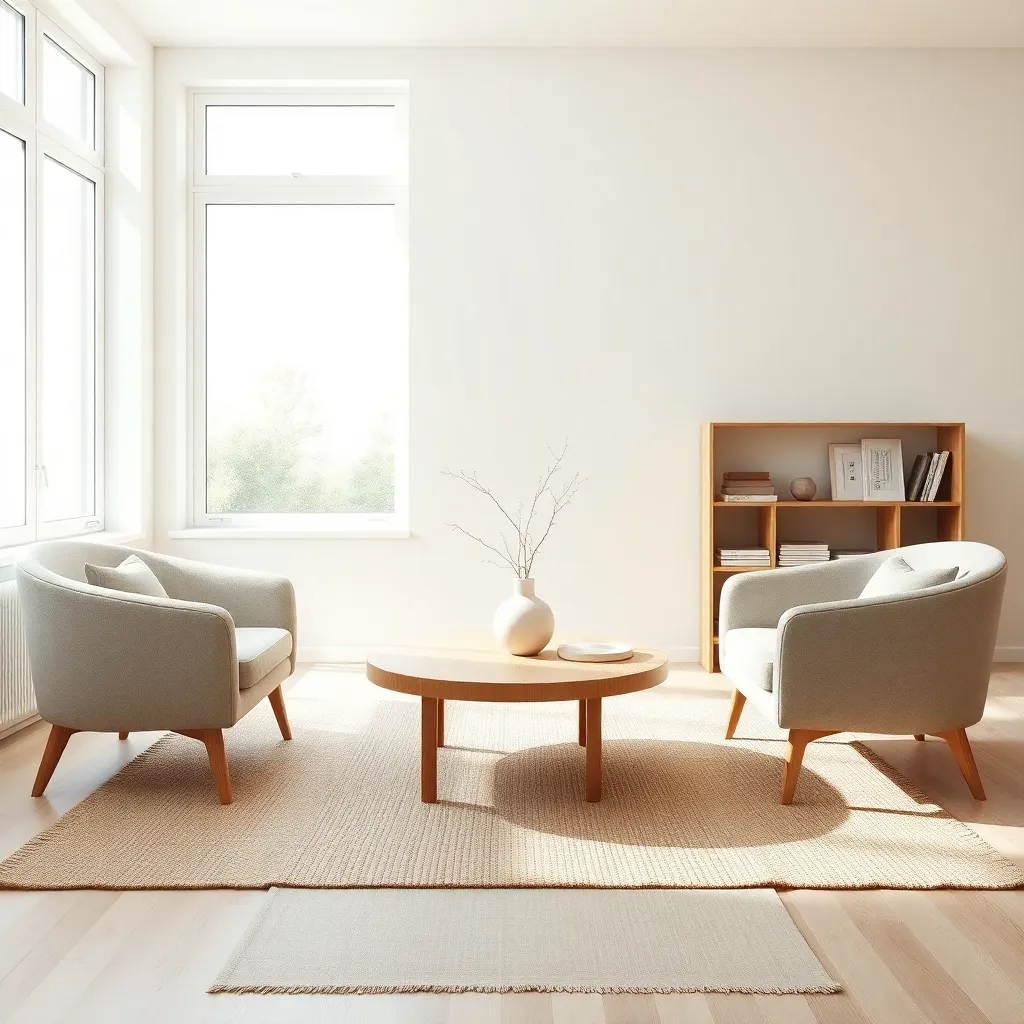
Creating a serene ambience in a Japandi-inspired home begins with a thoughtful selection of color palettes. Opt for neutral tones like soft whites, muted grays, and earthy beiges to form a calming backdrop that highlights the simplicity and elegance of this style.
To enhance serenity, incorporate natural materials in your furniture and decor. Pieces made from wood, stone, or bamboo not only bring the beauty of the outdoors inside but also complement the minimalist aesthetic inherent in Japandi design.
Furniture placement plays a crucial role in maintaining a serene atmosphere. Position seating and tables to encourage open flow and conversation, avoiding clutter and ensuring that each piece serves a purpose without overwhelming the space.
Advanced decorators can elevate serenity by introducing textural contrasts. Mix smooth surfaces like polished wood with nubby textiles such as linen or wool to add depth and interest without disrupting the tranquil theme.
Balancing Tradition with Modernity
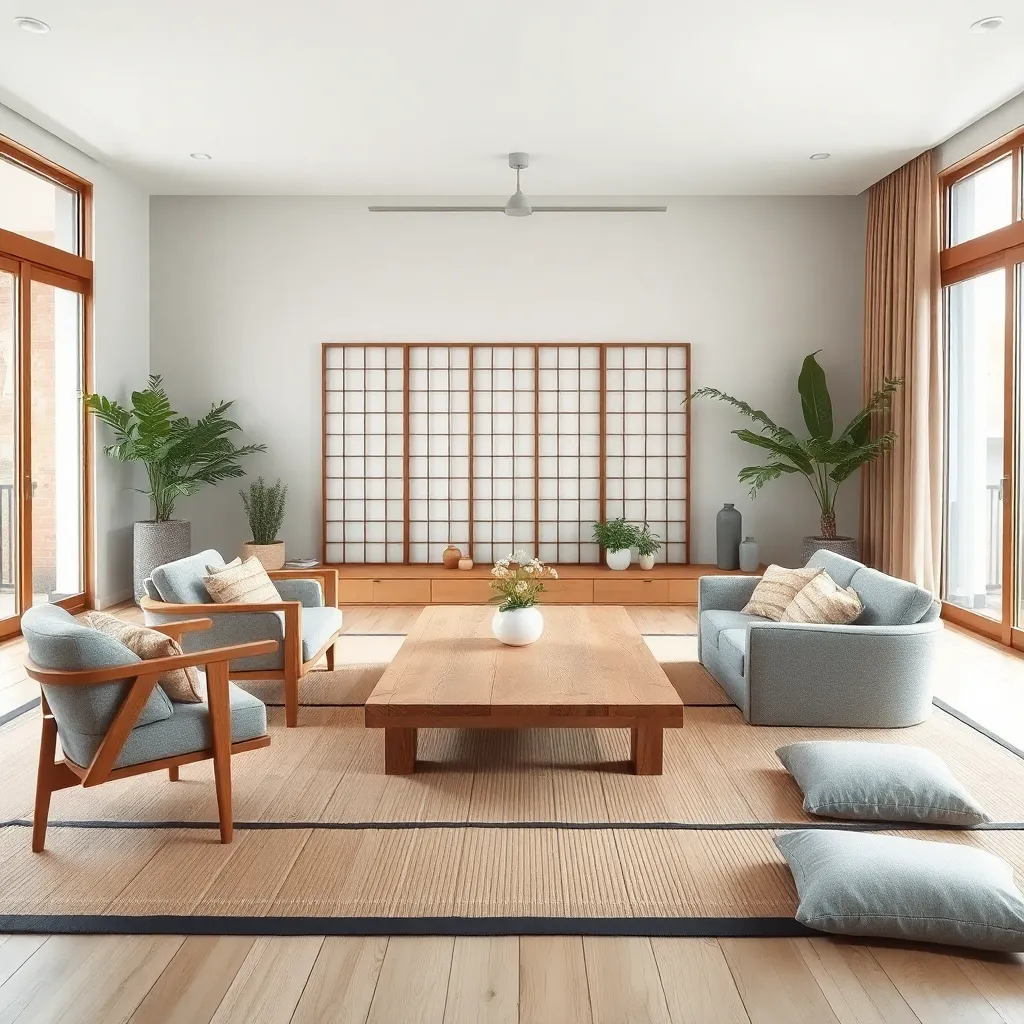
To strike a harmonious balance between tradition and modernity in a Japandi space, focus on integrating clean-lined furniture with classic, natural materials. Opt for a low-profile sofa with a sleek silhouette, upholstered in a textured fabric like linen or wool, which resonates with both Japanese minimalism and Scandinavian warmth.
Introduce a color palette that marries muted tones with occasional bolder accents to maintain interest without overpowering the space. Consider shades like soft beige or light gray for walls and upholstery, while incorporating deeper hues such as navy or forest green through accessories like cushions or throws for a subtle yet striking contrast.
When selecting furniture, prioritize pieces that showcase simple craftsmanship and multifunctionality. A wooden coffee table with a natural finish can serve as both a focal point and a practical element, offering storage or display space without cluttering the room.
Layering textures is crucial to achieving the Japandi aesthetic, creating depth while maintaining serenity. Combine smooth surfaces, like a ceramic vase, with rougher elements such as a woven jute rug, ensuring the room feels both grounded and inviting.
Opting for Clean, Simple Lines
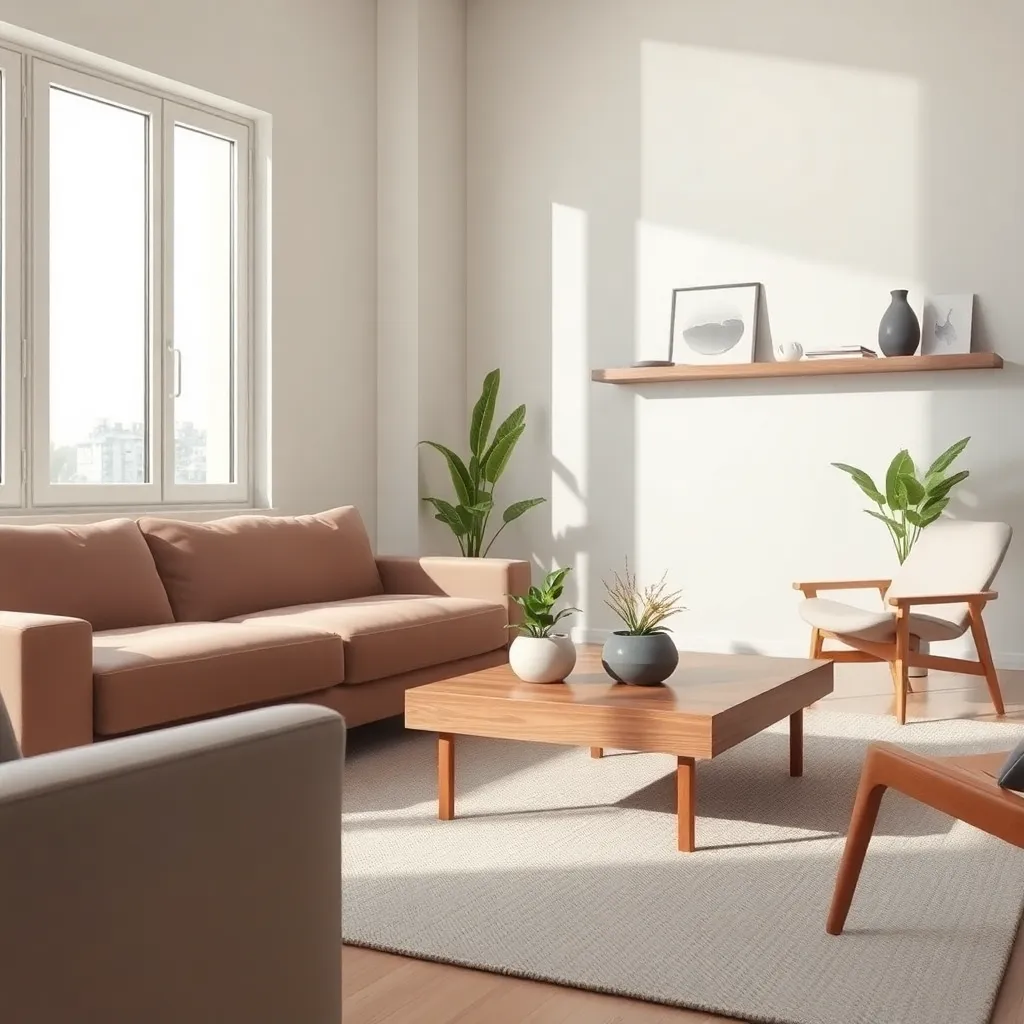
Embracing clean, simple lines is a hallmark of Japandi design, which combines the best of Japanese minimalism and Scandinavian functionality. Focus on choosing furniture with sleek silhouettes and understated elegance, such as dining tables with slim legs or sofas with low profiles.
Incorporating these elements into your home can create a sense of calm and spaciousness. Opt for neutral color palettes like whites, beiges, and soft greys to keep the atmosphere serene, allowing the clean lines to take center stage.
For beginners, start by decluttering your space and removing any unnecessary items that might disrupt the flow of the room. Consider investing in multi-functional furniture pieces like an ottoman with hidden storage or a bookshelf that doubles as a room divider to maintain simplicity.
Experienced decorators might explore advanced techniques, such as playing with contrasting textures to add depth without cluttering the space. Pairing a smooth leather chair with a coarse wool throw can create an interesting visual balance while keeping in line with the Japandi ethos.
Crafting Cozy Textural Layers

Incorporating cozy textural layers is essential to achieving the inviting warmth characteristic of Japandi interiors. Start by selecting natural materials like cotton, wool, and linen to create a tactile experience in your space. A great way to begin is by layering a chunky wool throw over a simple linen sofa; this not only enhances comfort but also adds visual interest.
To amplify the cozy factor, consider introducing a mix of textures through varied textiles such as cushions, rugs, and curtains. Choose a neutral color palette—think soft grays, beiges, and whites—and introduce depth with textures rather than bold colors. For example, a handwoven jute rug paired with smooth silk curtains can create a balanced yet diverse textural landscape.
Furniture selection plays a pivotal role in crafting these layers, with an emphasis on simplicity and function. Opt for pieces with a natural finish, like a light oak coffee table or a bamboo chair, which can add subtle texture without overwhelming the space. Advanced decorators might experiment with layering different types of wood finishes to add sophistication while maintaining a harmonious look.
Additionally, the strategic placement of decor items can enhance the layered texture effect. Position a ceramic vase with a matte finish beside a polished wooden sculpture to create a juxtaposition that draws the eye. For a more dynamic look, vary the heights and sizes of these elements to guide the viewer around the room. This technique not only promotes visual interest but also ensures that the space feels thoughtfully curated.
Focusing on Open, Airy Spaces
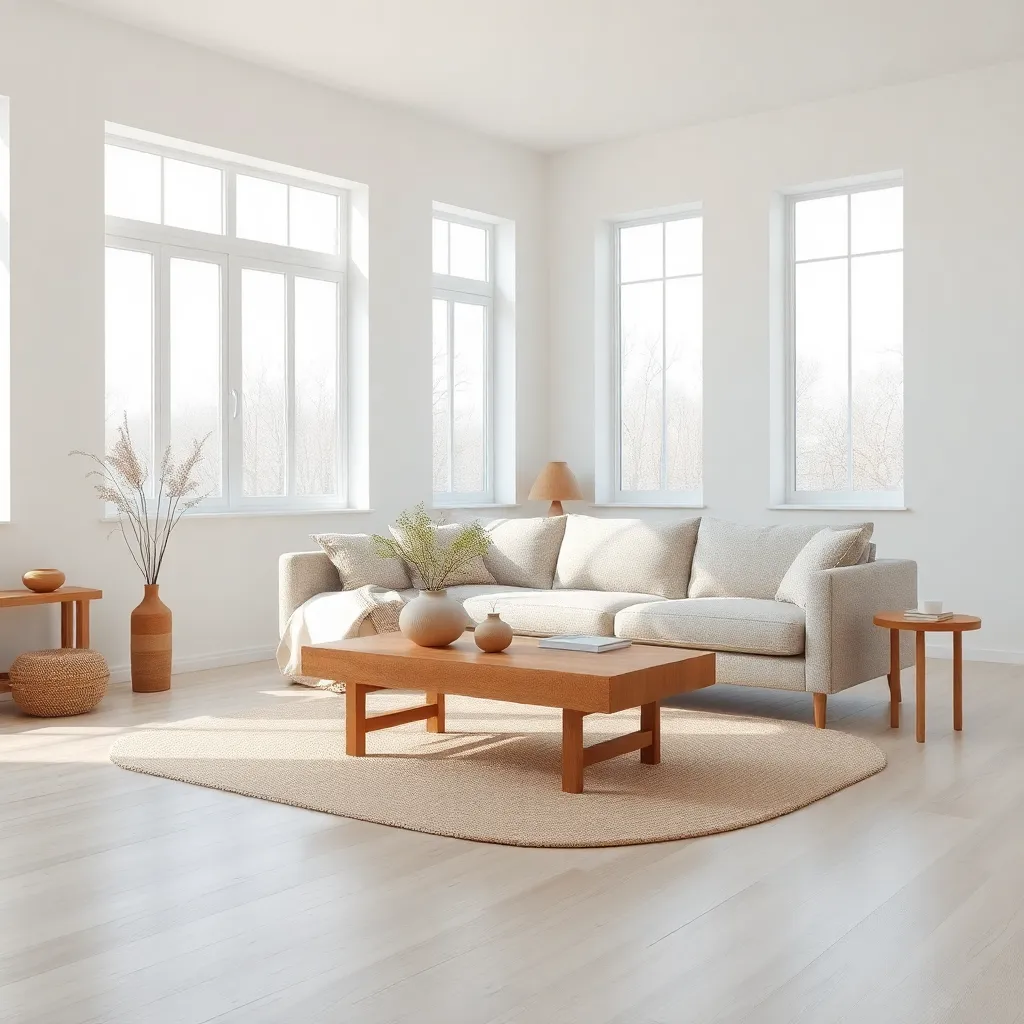
To achieve open and airy spaces within a Japandi design, focus first on minimalist furniture selections. Opt for pieces with clean lines and a neutral palette, such as a light wood coffee table or a cream-colored sofa, to maintain an uncluttered feel.
Strategic placement of furniture is crucial in maximizing space. Arrange seating to create a natural flow, positioning chairs and tables to encourage movement and interaction without blocking pathways.
Incorporating natural light is essential when designing open spaces. Use sheer curtains or blinds that can be easily adjusted to allow sunlight to fill the room, enhancing the airy atmosphere.
For a seamless transition between spaces, consider using a consistent color scheme throughout. Soft hues like sage green or pale gray can create a cohesive look that ties different areas together, promoting a sense of calm and openness.
Utilizing Muted, Earthy Hues
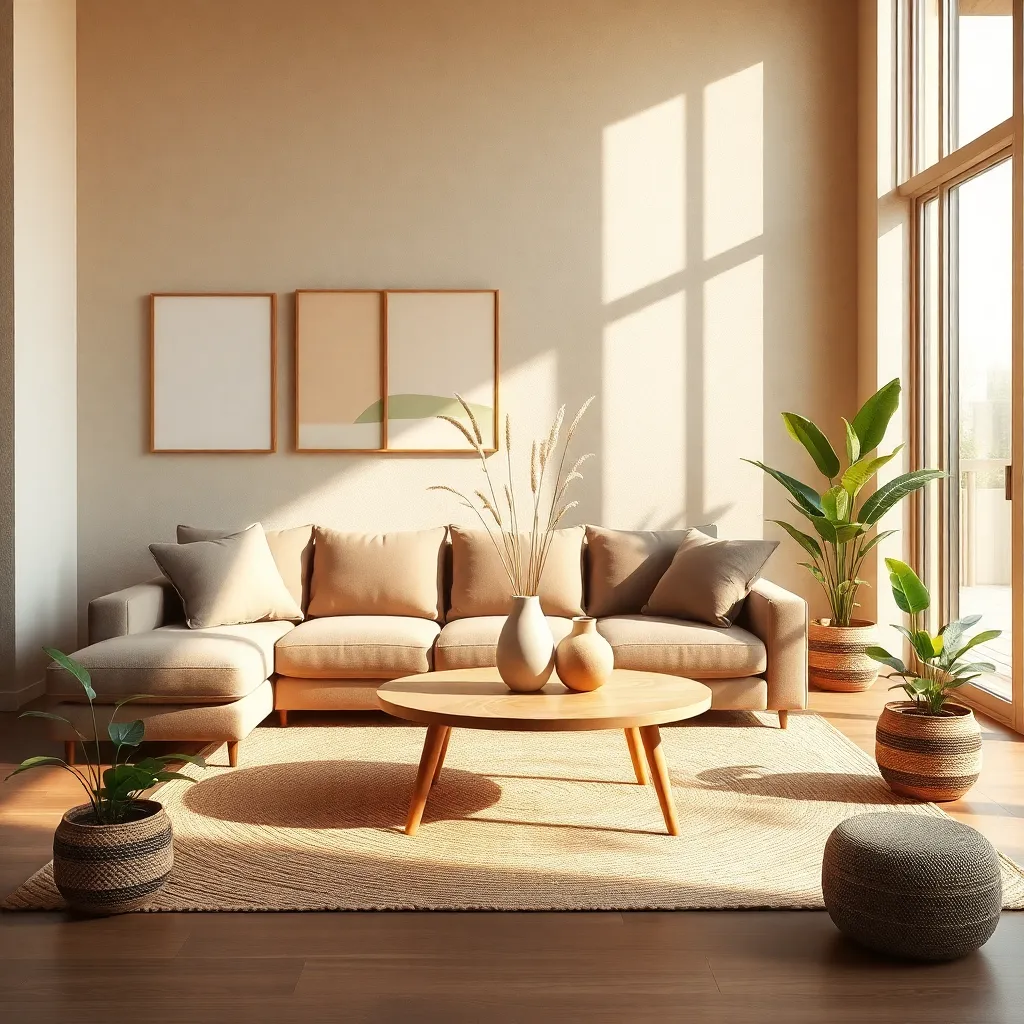
Embrace the serene beauty of muted, earthy hues to create a harmonious Japandi interior. Incorporating shades like soft taupe, gentle clay, and warm beige can set a tranquil tone while maintaining a sophisticated aesthetic.
When selecting furniture, opt for pieces in natural materials such as wood and stone to complement the earthy color palette. Sleek, minimalist designs with organic textures enhance the understated elegance of the space.
For a balanced look, consider layering different shades of earthy tones within your textiles, such as cushions, throws, and rugs. This layering approach adds depth and warmth without overwhelming the serene atmosphere.
To further enrich the design, introduce subtle accents of muted green or dusty blue, which pair beautifully with earthy hues. These calming colors can be integrated through small decorative items like vases, artwork, or even dried botanicals.
Adding Subtle Cultural Touches
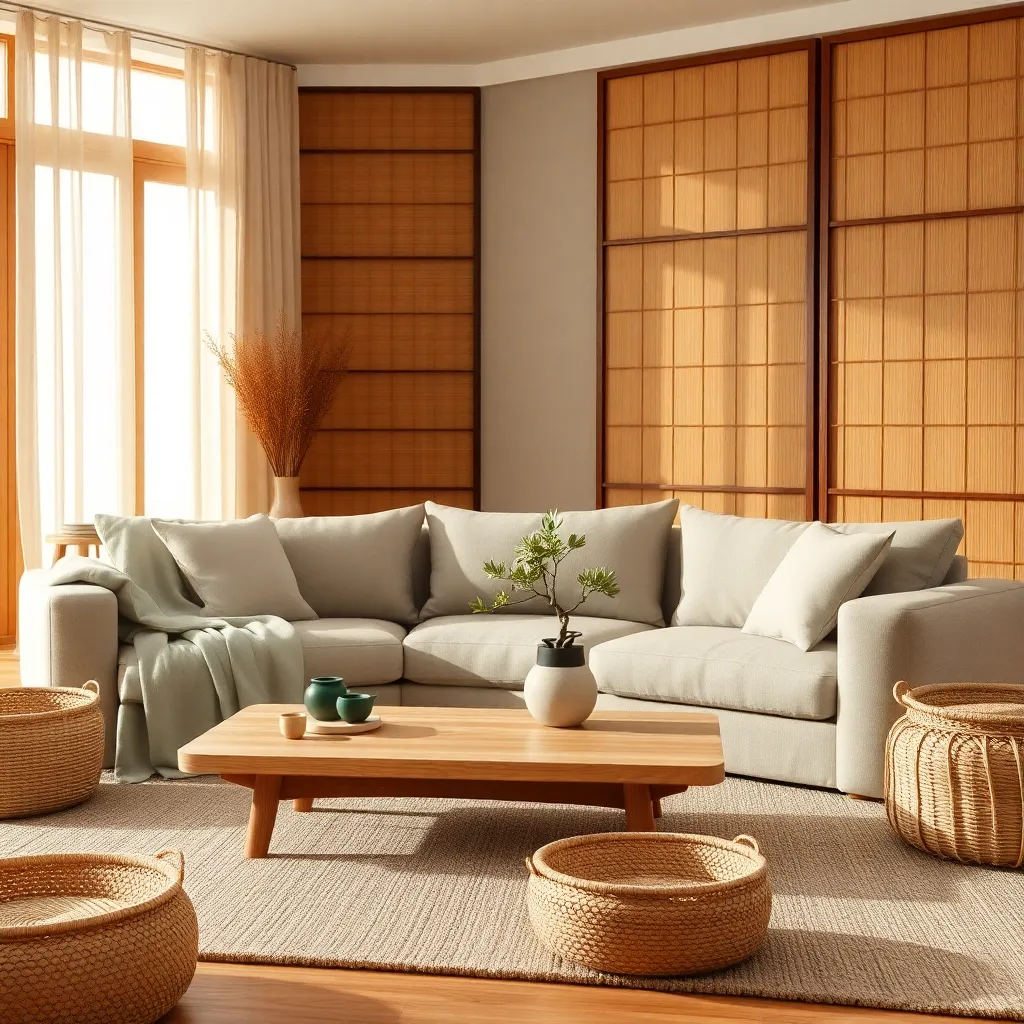
To infuse your Japandi space with subtle cultural touches, start by incorporating artwork that reflects both Japanese and Scandinavian aesthetics. Consider hanging a minimalist Japanese ink painting alongside a simple Scandinavian landscape, achieving a harmonious blend that respects both cultures.
Another effective way to add cultural elements is through textiles. Opt for handwoven Scandinavian throws in neutral tones or Japanese shibori-dyed cushions that can act as statement pieces on your sofa or bed.
Furniture selection also plays a crucial role in introducing cultural nuances. Choose low-profile, functional furniture pieces like a Japanese tatami mat or a Scandinavian wooden bench, which not only add cultural depth but also enhance the minimalist essence of Japandi style.
For those looking to delve deeper, experiment with materials that are significant in both cultures. Incorporate natural woods like oak and walnut for a Scandinavian touch, and use bamboo or washi paper accents to celebrate Japanese craftsmanship, creating a space that feels both grounded and sophisticated.
Achieving Harmony with Balance
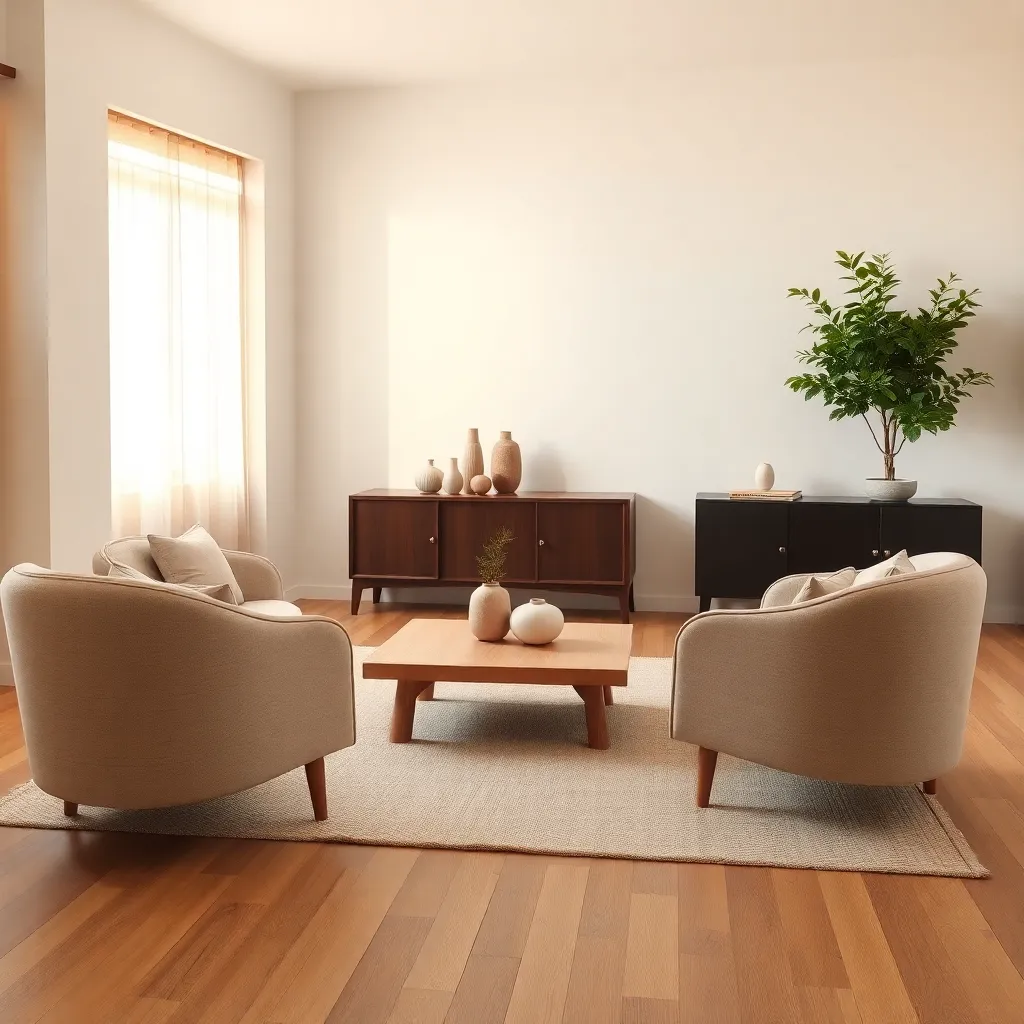
To achieve harmony with balance in a Japandi interior, start by focusing on the placement of furniture to ensure an even distribution of visual weight. Consider using a large, neutral-toned sofa as the anchor piece in your living room, then balance it with a sleek, minimalist coffee table placed at the center.
Incorporating symmetry can further enhance the sense of balance in your space. Arrange identical lamps or vases on either side of a console table to create a visually appealing focal point.
For color schemes, opt for a palette that blends soft neutrals with a few bold accents. Choose calming hues like muted greens and earthy browns to maintain a serene atmosphere, while adding depth with darker shades like charcoal or navy.
Layering textures is another effective way to achieve balance while adding visual interest. Combine materials such as natural wood, stone, and soft textiles to create a harmonious yet dynamic environment, ensuring that no single texture overpowers the others.
Conclusion: Growing Success with These Plants
In exploring the harmonious blend of Japandi interior design, we discovered 14 elegant concepts that transcend aesthetics, offering insights into creating balanced and nurturing relationships. From embracing simplicity to valuing functionality, cultivating mindfulness, and fostering open communication, each principle serves as a metaphor for building stronger connections. By prioritizing calmness, appreciating imperfections, and incorporating natural elements, we can enhance our living spaces and relationships alike, fostering environments where love and understanding flourish.
As a first step, choose one concept—perhaps the art of decluttering your emotional space—and apply it to your relationships today. Notice how simplifying and focusing on what truly matters can deepen connections and bring a serene clarity to your interactions.
Remember, the journey to relationship success is ongoing, and having resources at your fingertips can be invaluable. Save or bookmark this article for future reference, ensuring you have these transformative insights readily available as guiding lights on your path to a thriving relationship.
Embrace these timeless principles, and watch as they not only elevate your living spaces but also pave the way for enduring relationship success, where harmony and happiness are constants in your shared journey.
